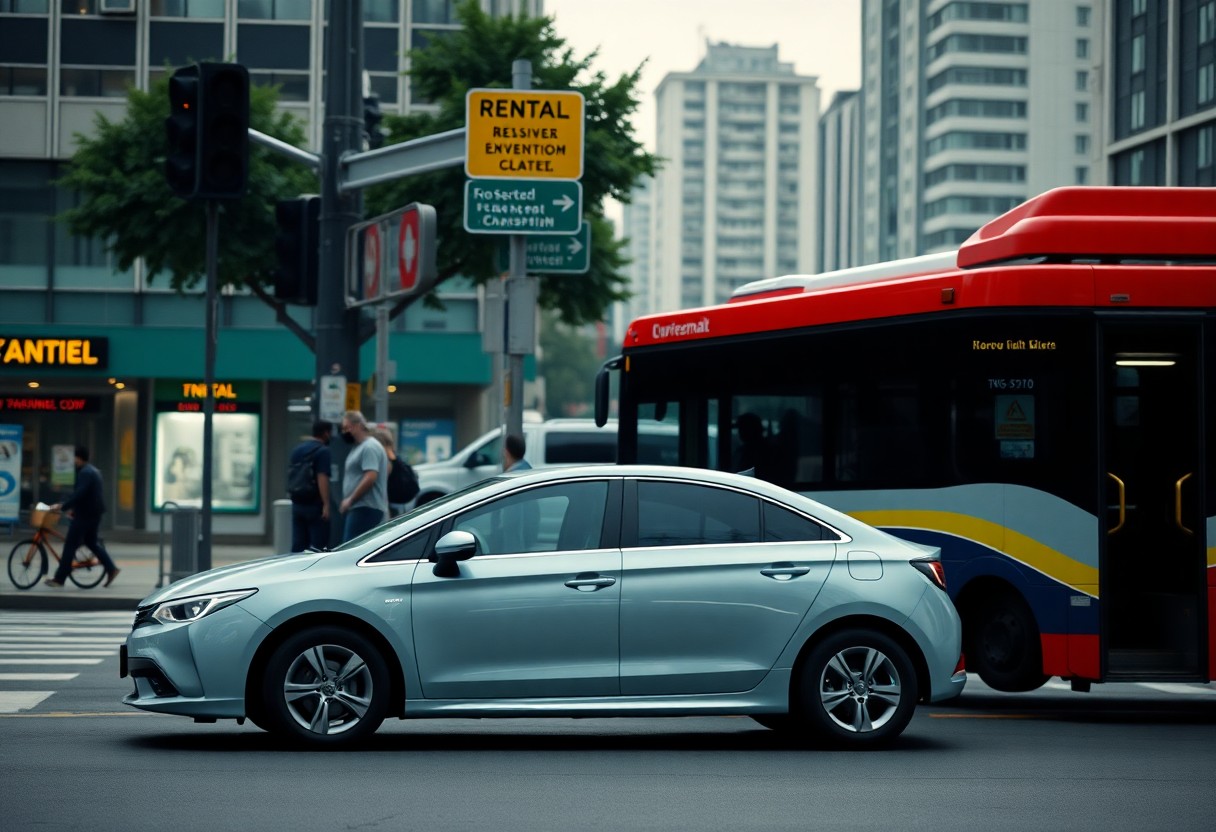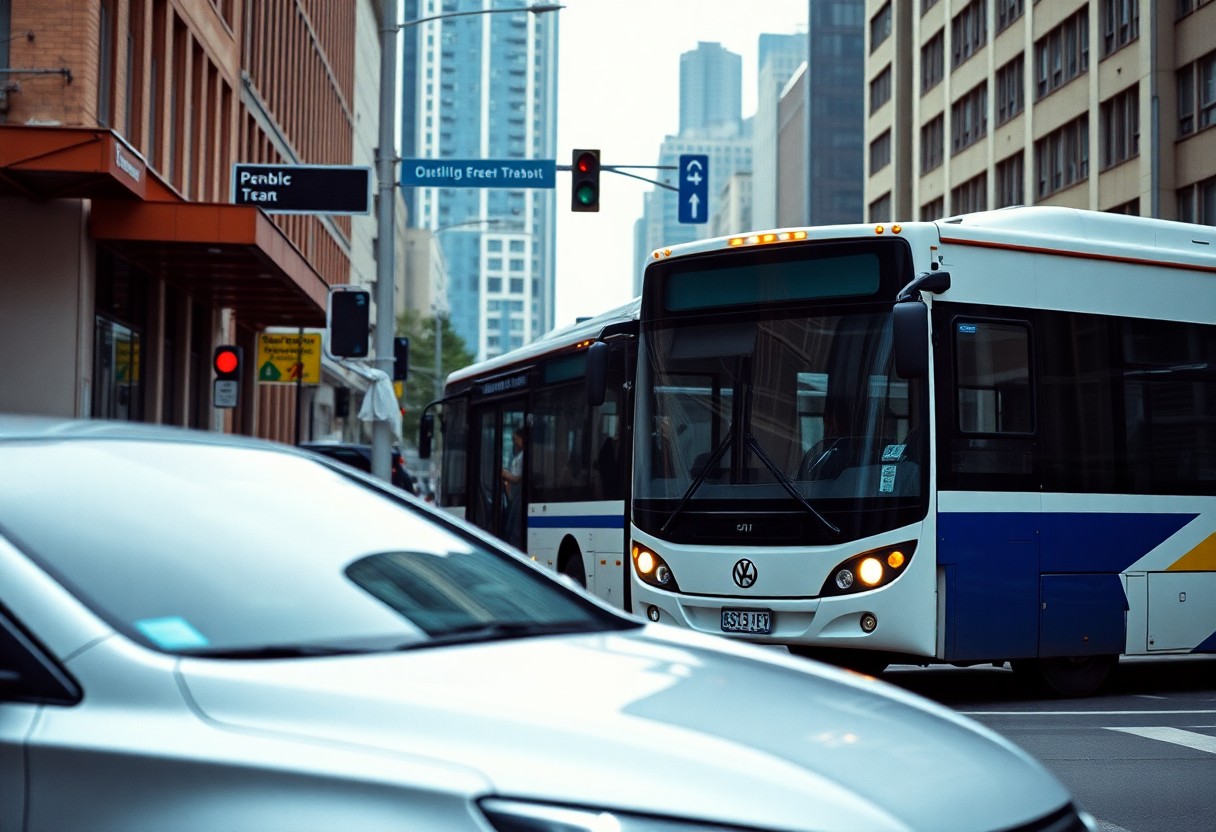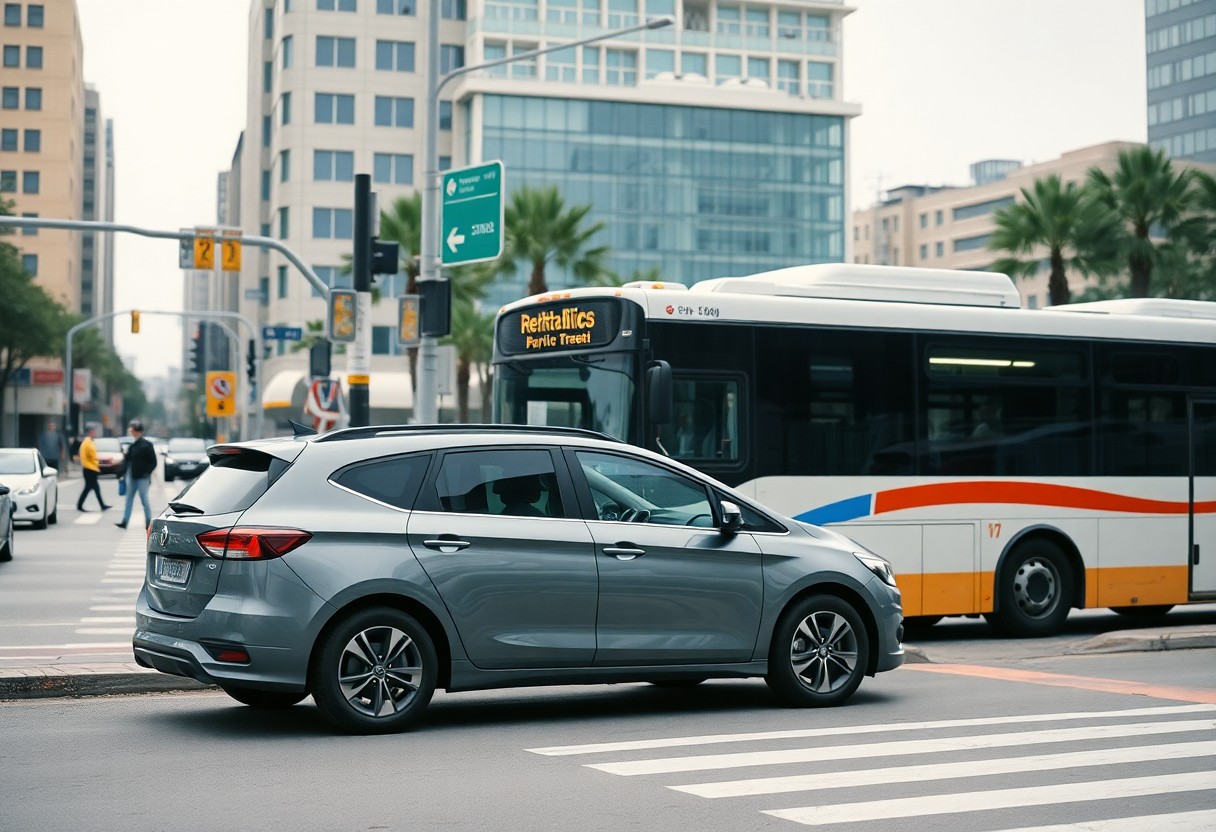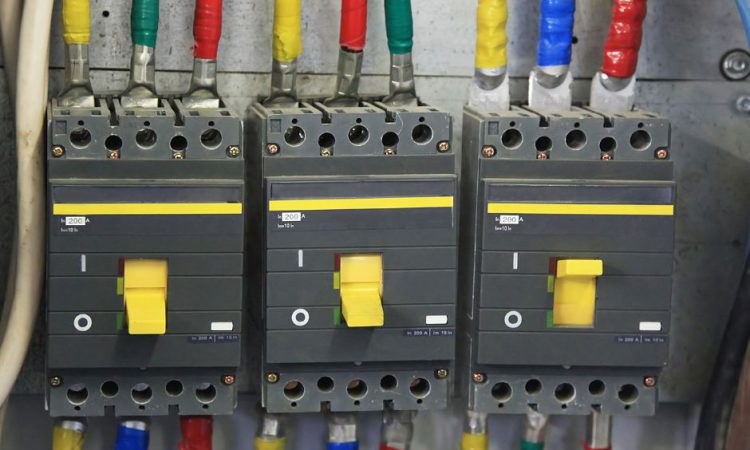
Renting a Car or Taking Public Transport: Choose Your Best Option
As travel costs continue to escalate and personal time becomes a precious commodity, selecting the most suitable transportation method for your journey is crucial. This choice not only influences your financial budget but also shapes your overall travel experience. When planning your next adventure, you will encounter the decision between the freedom of a rental car and the affordability of public transportation. Your choice will depend on various critical factors, including your travel destination, planned itinerary, and the number of companions accompanying you. This comprehensive guide is designed to help you navigate essential considerations, from hidden rental fees to public transport accessibility, ensuring you make an informed decision tailored to your specific travel needs.
Experience Unmatched Travel Freedom by Renting a Car
The independence that comes from renting a car unlocks a realm of travel possibilities that can enhance your journey. By selecting a rental vehicle, you gain full control over your travel itinerary, enabling you to discover destinations that extend beyond the typical tourist attractions. Recent studies indicate that 73% of travelers opt for rental cars due to the flexibility they provide, making this choice especially appealing for those who cherish autonomy during their adventures. With a rental car, you can craft your own unique adventure, stopping wherever your heart leads, and making spontaneous decisions that enrich your travel experience, allowing for a deeper connection with the places you visit.
Evaluate the Benefits and Drawbacks of Rental Car Options
Once you have secured your rental vehicle, you will enjoy newfound freedoms along with certain limitations. You can venture into off-the-beaten-path locations and modify your schedule as needed, but it’s essential to remain mindful of potential parking fees, which can vary from $25 to $45 daily in busy urban environments. Furthermore, you may face navigation challenges in unfamiliar areas. While your rental car serves as your personal sanctuary, you will also be responsible for fuel costs and navigating traffic, which can occasionally lead to stressful situations. By understanding these dynamics, you can maximize the advantages of your rental experience and fully enjoy the journey ahead.
Identifying Hidden Costs and Unexpected Savings in Rental Agreements
While the freedom of a rental car comes with associated costs, it can also reveal unexpected financial benefits. Although initial rental fees may appear steep, it’s crucial to realize that traveling in a group can often be more cost-effective compared to purchasing individual tickets for public transport. Recent data suggests that families of four or more usually save 15-20% on transportation expenses when choosing a rental vehicle over public transit options, making it an economical choice for larger groups wishing to travel together seamlessly.
Upon conducting a more thorough financial analysis, other significant considerations emerge. Insurance premiums can add $15-$30 daily to your rental costs, but many credit card companies provide rental car protection services that may alleviate this expense. Additionally, the fuel efficiency of modern rental fleets, averaging around 30-35 MPG, can assist in keeping overall costs manageable. The convenience of door-to-door travel not only saves time but also enhances your ability to enjoy your vacation without the inconvenience of navigating complex public transport systems.

Utilize Public Transportation for a Local Experience and Seamless Travel
If you decide to depend on public transportation, the first step is to familiarize yourself with the system. Most major cities now offer user-friendly transit applications that assist you with planning your routes, tracking real-time arrivals, and purchasing tickets. Understanding the local transit network—encompassing bus routes, subway lines, and transfer stations—is critical for a smooth travel experience. Research shows that 55% of urban travelers save up to 30 minutes per trip by utilizing these transit applications, significantly enhancing their overall efficiency and enjoyment during their travels.
Master the Urban Public Transit System for Efficient and Stress-Free Travel
Each city’s public transportation system operates with its own unique patterns and rhythms. Expect to encounter peak hours, typically between 7-9 AM and 4-6 PM, when commuter crowds are at their highest. Therefore, it is wise to incorporate alternative routes into your travel strategy, as delays are common during these busy times. Including a buffer of 15-20 minutes for important appointments will help ensure you arrive on time and mitigate stress associated with unforeseen delays, allowing you to enjoy your journey with peace of mind.
Engage with the Social Dynamics of Public Transit for a Rich Experience
Beyond practical considerations, utilizing public transportation offers a unique social experience. You will share space with both locals and fellow travelers, enabling you to immerse yourself in the authentic atmosphere of the city. Although this can occasionally lead to uncomfortable situations, it also provides rich cultural insights. Studies have demonstrated that regular public transit users develop enhanced social skills as they navigate various social scenarios, making this an invaluable aspect of urban travel that fosters connections and understanding.
At times, you may find yourself navigating diverse social situations on public transport. From the bustling energy of rush hour to the quiet solitude of late-night rides, each moment presents its own unique atmosphere. Safety is particularly important during off-peak hours, so it’s essential to remain vigilant and choose well-lit, populated areas for waiting. Most transit systems now boast 24/7 security monitoring and emergency communication systems to enhance your safety while traveling, providing peace of mind as you navigate the urban landscape.
Conduct a Comprehensive Financial Analysis of Your Transportation Options
When weighing your travel options, budgeting plays a crucial role in determining whether to rent a car or use public transport. Your transportation expenses can vary significantly based on factors such as your destination, trip duration, and the number of travelers in your party. While rental cars provide greater flexibility, they also come with hidden costs like insurance, fuel, and parking fees. On the other hand, although public transit may seem like a more affordable choice at first glance, the cumulative expenses of frequent daily rides can add up quickly, affecting your overall travel budget.
Detailing the Real Costs Involved with Driving a Rental Car
A thorough financial evaluation of rental cars reveals expenses that extend beyond the daily rental rate. You should anticipate $30-$50 daily for insurance, average fuel costs that range around $40-$60 per tank, and potential parking fees that can escalate to $50 per day in major cities. Consequently, your total daily travel expenses could easily range from $100-$200, making this option particularly appealing when traveling as a group, where costs can be shared among multiple travelers, optimizing your budget.
Unpacking the Cost Dynamics of Public Transit Tickets and Passes
Initially, public transportation may seem like the more economical option. For instance, in cities like New York, where average metro cards cost $34 for unlimited weekly rides, substantial savings can be realized compared to rental car expenses. Additionally, you will avoid extra costs such as parking and fuel, making public transit especially advantageous for solo travelers seeking to minimize their overall expenses while exploring the city.
Cost comparisons reveal that weekly public transport passes in many large cities typically range from $25-$40, offering unlimited rides. However, for families or groups of four or more, the cumulative cost of multiple transit passes might exceed the expense of renting a car, particularly when planning extensive daily travel or excursions to areas with limited public transport options, making it crucial to analyze your specific needs.

Enhance Your Time Management Skills for Optimized Travel
As you weigh the options of rental cars versus public transport, prioritizing your schedule becomes essential. A rental car facilitates direct, point-to-point travel, potentially saving you up to 40% of your travel time compared to public transportation methods. Your time is invaluable – while public transport may initially seem like a cost-saving alternative, it’s critical to account for the hours spent waiting, transferring, and walking to and from stations, all of which can significantly diminish your travel efficiency and enjoyment.
Revel in the Flexibility Offered by a Rental Car
When it comes to time flexibility, a rental car provides you with complete control over your departure and arrival times. You are liberated from the constraints of fixed transit schedules, allowing for spontaneous detours or last-minute changes to your plans. This level of freedom is invaluable when unexpected circumstances arise or when you stumble upon hidden gems during your journey, empowering you to fully embrace the adventure and make unforgettable memories along the way.
Navigate the Complexities of Public Transport Timetables for Smooth Travel
One of the primary challenges associated with public transportation lies in adhering to strict schedules. Studies indicate that 23% of urban buses do not run on time during peak hours, potentially disrupting your carefully laid plans. Your journey may involve multiple connections, and a delay in one service can create a domino effect, throwing your entire day off course and leading to frustration.
To effectively navigate public transportation, it’s wise to build in extra buffer time for your travels. Transport experts recommend adding 15-20 minutes to your projected travel time for each connection you need to make. During rush hours or special events, consider doubling these buffer times, as they can significantly affect your available time for activities and sightseeing, ensuring you can fully enjoy your travel experience.
Assess the Environmental Impacts of Your Transportation Choices
When evaluating your transportation options, it is essential to consider the environmental consequences of your decisions. A single-occupancy rental car emits approximately 404 grams of CO2 per mile, whereas public transportation can significantly reduce emissions by up to 45% per passenger. The choice to rent a car versus utilizing public transit has a substantial environmental footprint that merits careful consideration and awareness among travelers.
Understanding Your Carbon Footprint as a Conscious Traveler
Every mile you travel directly contributes to climate change and environmental degradation. A fully-loaded bus can replace the need for up to 50 cars on the road, leading to a significant reduction in carbon emissions. Your journey in a rental car can produce 4-5 times more CO2 than an equivalent trip via bus or train, although choosing electric or hybrid rental options can considerably mitigate this impact, showcasing the importance of making informed choices.
Explore Eco-Friendly Transportation Alternatives for Sustainable Travel
Upon reaching your destination, you’ll discover a variety of environmentally friendly transportation options. Electric car rentals have the potential to cut your carbon footprint by up to 50% compared to traditional vehicles. Additionally, many cities now feature hybrid buses and electric trams, making public transport an increasingly sustainable choice for eco-conscious travelers who wish to minimize their environmental impact.
Consequently, your environmental impact can vary significantly based on your transportation choices. Consider employing a mixed-method approach—renting an electric or hybrid vehicle for longer journeys while utilizing public transport in densely populated areas. Numerous rental agencies now provide green vehicle options, allowing you to maintain your mobility while actively reducing your ecological footprint, contributing to a healthier planet.

Prioritize Comfort and Convenience During Your Travels
In contrast to public transportation, rental cars offer complete control over your comfort preferences. You can easily adjust the climate settings, seating arrangements, and audio preferences to suit your personal tastes, creating a travel environment tailored to your needs. This level of customization becomes especially valuable during extreme weather conditions or lengthy journeys, where overall comfort can greatly enhance your travel experience and enjoyment.
Relish the Advantage of Personal Space in Rental Vehicles
One of the most significant benefits of renting a car is the guaranteed personal space it provides. You will not have to contend with crowded buses or trains, where personal space often shrinks to less than 4 square feet during peak travel times. Your rental car transforms into a private oasis, allowing you to maintain full control over your travel environment and who shares it with you, enhancing your comfort and overall satisfaction during your journey.
Recognizing the Varied Comfort Levels of Public Transportation
Comfort levels on public transit can fluctuate greatly due to factors beyond your control. During peak hours, you may find yourself squeezed in with 150-200 passengers in a single subway car, significantly diminishing your comfort and personal space. The experience may often involve standing for extended periods, especially during the average 38-minute commute in major cities, which can be particularly challenging for travelers with luggage or those who require additional space.
During a typical rush-hour scenario on public transport, noise levels can peak at around 80-90 decibels, comparable to the sound of heavy city traffic. These conditions, compounded by unpredictable delays and service interruptions, can make your journey less enjoyable and more stressful, particularly when traveling with family or friends, underscoring the importance of considering comfort in your transportation choice.
Determine the Ideal Transportation Option Based on Your Unique Travel Needs
Ultimately, your decision between renting a car and utilizing public transport should reflect your specific travel requirements and preferences. If flexibility and comfort are your top priorities, particularly when traveling with family or friends, a rental car generally offers the best value despite the higher upfront costs. Conversely, public transportation can serve as an excellent option for budget-conscious solo travelers who prefer established routes in urban centers. It is essential to analyze factors such as your destination, group size, planned activities, and budget constraints. By thoughtfully evaluating these elements against your personal preferences, you can select the transportation option that aligns most closely with your travel goals and enhances your overall experience.
The Article: Renting a Car vs. Public Transport: Which is Best for Your Trip? appeared first on https://rentacar24.org/
The Article Renting a Car vs. Public Transport: Choose the Best Option for You Was Found On https://limitsofstrategy.com
The Article Renting a Car vs. Public Transport: Find Your Best Travel Option First Appeared ON
: https://ad4sc.com












I really resonate with the points you’ve made about the significance of choosing the right transportation method. It reminds me of a road trip I took last summer with friends—we opted for a rental car instead of public transport, and it completely changed our experience. We had the flexibility to explore hidden gems and make spontaneous stops, which I feel like you miss out on when depending on trains or buses.
It’s interesting to see how the freedom of renting a car often gets touted as a significant advantage of road travel. However, I can’t help but reflect on some downsides that are sometimes overlooked. For instance, the burden of hidden fees, like insurance or fuel charges, can quickly inflate costs, leading to a less enjoyable experience rather than the freeing adventure we envision.
Your insights on the delicate balance between travel costs and personal time resonate deeply, especially in today’s fast-paced world where each minute of our lives feels increasingly valuable. The way you highlighted the trade-offs between renting a car and utilizing public transportation is key in enhancing our overall travel experience. In fact, I’ve found that this decision often reflects not just our budgetary constraints, but also our travel philosophy.